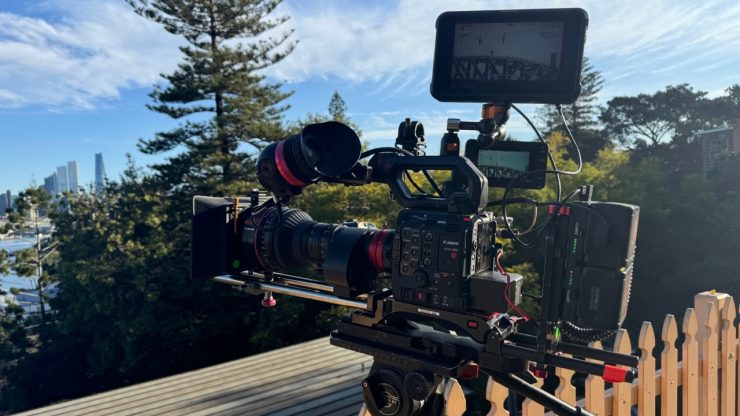
This was my first look at the Canon C400, and these are my thoughts from an owner-operator perspective.
Is the camera market getting to a place where most cinema cameras are so close in image quality that it’s not that important which one you buy? Is the lens, lighting, grade, price, or what the production company wants more important? These are all very relevant questions.
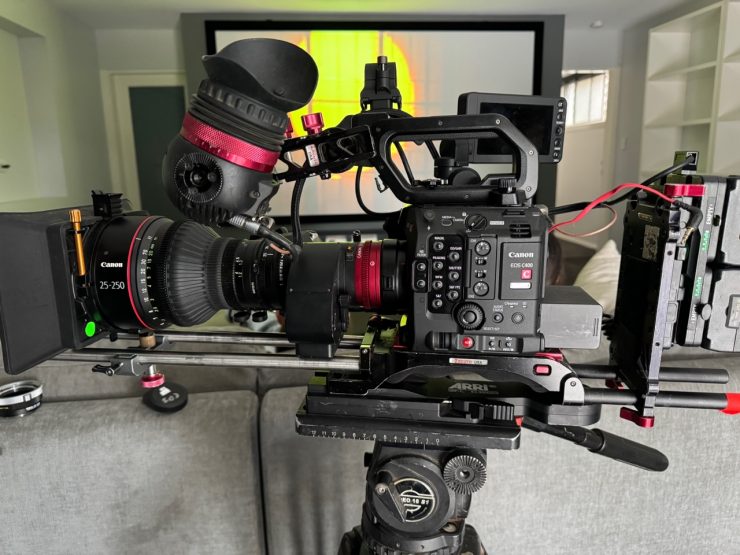
Canon loaned me the C400 for a few days, and I thought I would be doing a review partly based on what I thought would be its main competition, the Sony FX6. Personally, I found this camera sits closer to the Burano in terms of features and image quality but somehow comes in at one-third of the price at $7,999 USD. I have owned a lot of Canon cameras and lenses, I moved from the C500 Mark II and C70 to a Sony VENICE and FX6. I tested the C400 with lenses I own and use regularly, I wanted to know if this camera fits my needs as an owner-operator. I also wanted to test the camera in a situation as a solo shooter. I set up a scene with no 1st AC, no gaffer, no sound recordist, just me dealing with the late afternoon sun and a BBQ master, my friend from ‘Wood-Fire-Stove’, Nico.
I did watch Canon’s release video, they had a cast and crew of thousands, and to me, it looks like they wanted to appeal to higher-end productions using a big crew and a big budget, I think they may have forgotten who this camera is aimed at. I wanted to do a video that more closely resembles a production some of us might encounter on a day-to-day basis.
I set myself up with one single light, a RODE wireless GO 2 mic system, the Canon C400 mounted with a Canon flex zoom 45-135mm (meta-bones RF-PL- you have to remove the small support from meta-bones for it to fit the C400).
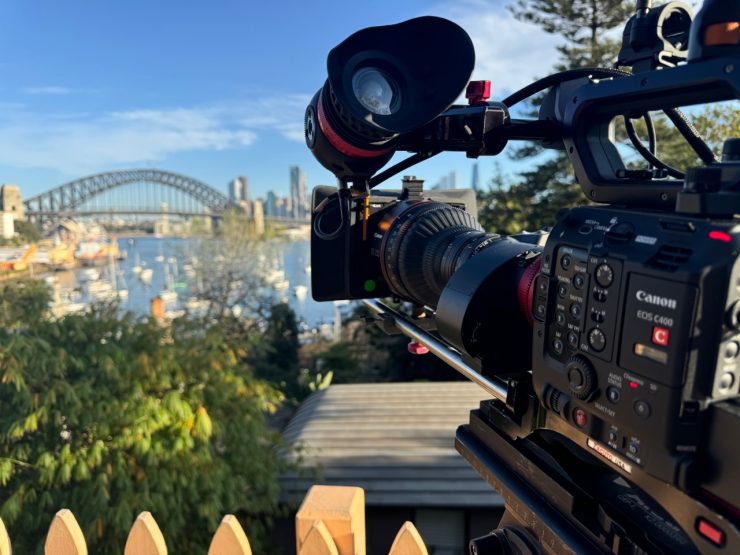
The flex zoom can be a handful as a solo operator, but I decided to shoot handheld, and then I found one of the most challenging backdrops I could.
I shot Cinema RAW Light ST: 6000 x 3164 886 Mbps in full frame. If you want a lower resolution in RAW then you will have to shoot Super 35. It would be great to have RAW full frame in DCI as well.
The results were incredibly impressive, I had the sun going in and out, the background changed a lot, and the C400 was a joy to use, it felt very similar to my C500 Mark II. I did miss having a variable ND of the Sony FX6 but everything else felt familiar. I didn’t have time to set up all my shortcut buttons, this is something I’d recommend. Also, the audio controls are now much easier to access, but all of this is still a bit tricky when shooting off the shoulder. I edited and graded this video; A colourist could do a much better job, but the purpose of the video was to be a solo operator. Canon’s 6K RAW files edit on my M1 Mac with no issues at all, I have always enjoyed Canon colours and this camera is no different.
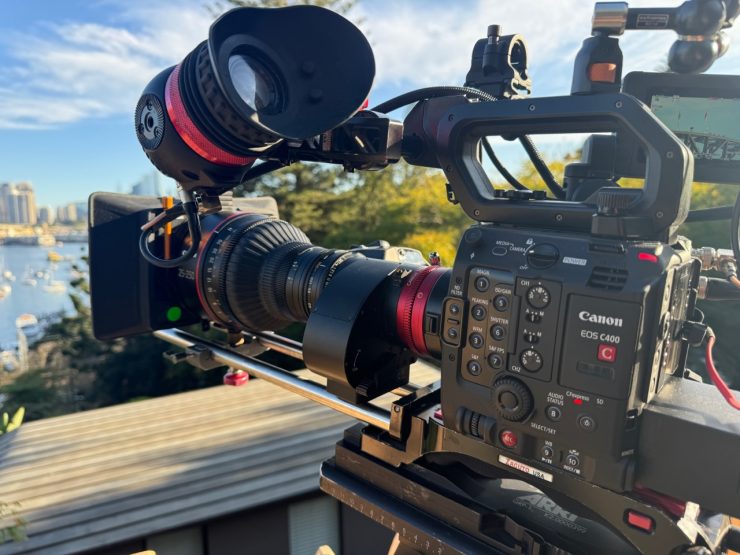
No EVF is becoming a trend on new cameras, and I am not a fan of this. I know loads of DP’s use a monitor and don’t use an EVF, but plenty of guys won’t buy a camera without an EVF. A loupe is not the answer either. The C400 cannot use the EVF-V70 as the monitor connection is Type-C. The camera also doesn’t have the connecter for Canon’s cine lens for power and data, I’d imagine there must be a higher-end camera coming, perhaps a C600-800 that utilizes the V70 and allows more RAW options and a DGO sensor (painful but not a deal breaker for me). The SDI monitor out allows camera information, peaking and Zebra to a 3rd party EVF, I used the Zacuto gratical eye, and there is a second clean SDI as well.
I wish camera manufacturers would go back to providing EVFs with their cameras.
AUTOFOCUS
For a long time, they have had an autofocus in Cine lenses, but it doesn’t seem to get much attention. The C400 has an updated version, Dual Pixel AF 2, which has eye and face detection, and you can even select human or animal. I had a short window to test it using a Canon 25-250mm – RF to EF Adapter (EF or RF mount only for autofocus). The updated system works well with the lens, and it finds focus very quickly. I didn’t have time to try all the settings, but I got some very impressive results. The touch screen is very accurate. It does have some weaknesses like all autofocus systems as it struggled through trees or foreground. It took a little while to engage the eye detection from a distance and wasn’t amazing in low light conditions. This could also be improved by having more time with the camera. This is another reason I’d like to get back to a Canon system and move away from having to use still lenses to get autofocus.
Good value for money
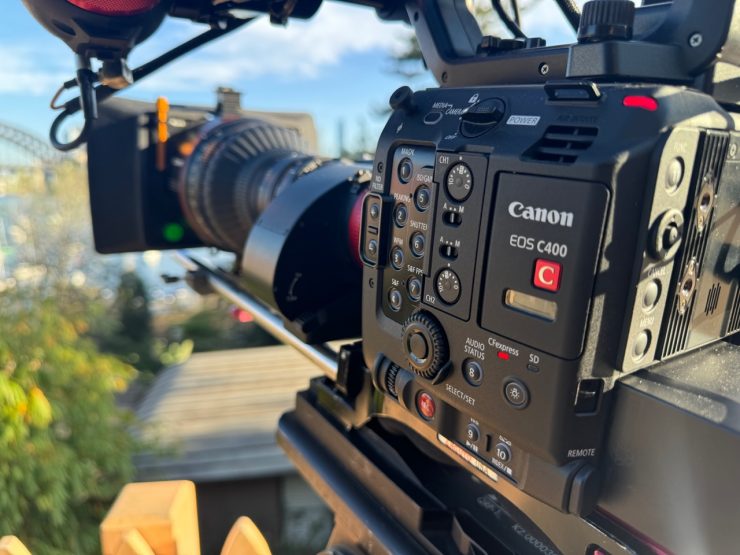
Does the C400 represent where the value in the camera market is now? Does $7,999 USD give you more than most of us need? I would rather have three Canon C400’s for the type of work I do than one $25,000 camera. 6K RAW is a hard sell to some productions especially on some of the shows I do, as we can have up to 20 cameras on set. I do a lot of reality TV, I worked on a new series for Netflix using the FX6, and we had to use a lot of stills lenses because we had to cover the full frame senor of an FX6 to get 4K. The C400 offers full frame, S35, and S16 in most codecs and resolutions which would allow us to use S35 lenses again for streaming productions in 4K.
Netflix Approved
Canon has a section on their website with details of their Netflix-approved Cameras, clearly a selling point for any new camera (if you are working on Netflix originals).
https://www.canon.com.cy/pro/stories/netflix-approved-canon-cameras/
The Netflix approval list is still a big part of marketing a camera. I think we all owe Netflix some credit for camera manufacturers not getting away with holding back key features like time code and 10-bit, but I do wonder if they are then cutting corners elsewhere now, although it’s nice to see cameras coming out with the Netflix-approved list in mind all the same. The C400 only has one CFexpress Type B slot and an SD slot. Dual CFexpress slots might be a features they have held back for a higher-end model. Having two CFexpress could be seen as a negative, although others not shooting RAW might find this appealing if they already own SD cards. The camera has two mini XLR inputs, Mini Genlock and mini timecode, which means more cables to buy and lose. It also has a 3.5mm mini jack audio in, which I found rather handy, I was able to plug the RODE Wireless Go 2 into that rather than buying mini XLR cables.
Final Thoughts
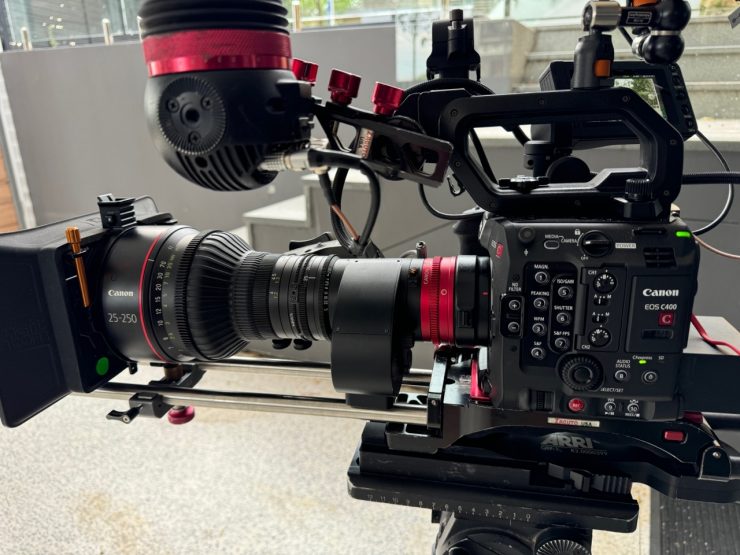
I think the Canon C400 is punching well over its price point. Triple native ISO is a very welcome addition, reality TV has become very reliant on the high bass ISO of the FX6 for all the night scenes, and I can’t see a camera gaining traction without having that performance in low light. Reality TV shows now budget lighting around the performance of a camera in low light, a slower camera means a lot more lights and money.
The RF mount is a welcome upgrade from EF or PL on the C500. Overall, the images I got from this camera really impressed me. While no camera is perfect and I’m not here to nit-pick, it has all the features I wanted if an FX6 Mark 2 was to be released. I know shooters with the Burano will defend their cameras as it’s a big investment and any owner-operator wants to sell themselves and the camera package they own. In Australia, a Burano retails for around AUD $45,000, while the C400 is AUD $13,000, and the Sony FX6 is $8800 AUD. We suffer from a weak USD dollar in Australia, when I bought a Sony F5 it was USD $16,000 but cost AUD $18,500. I have emailed Sony more than once to point this out, and their reply was, Sorry, but the head office in Japan sets the price according to your region.
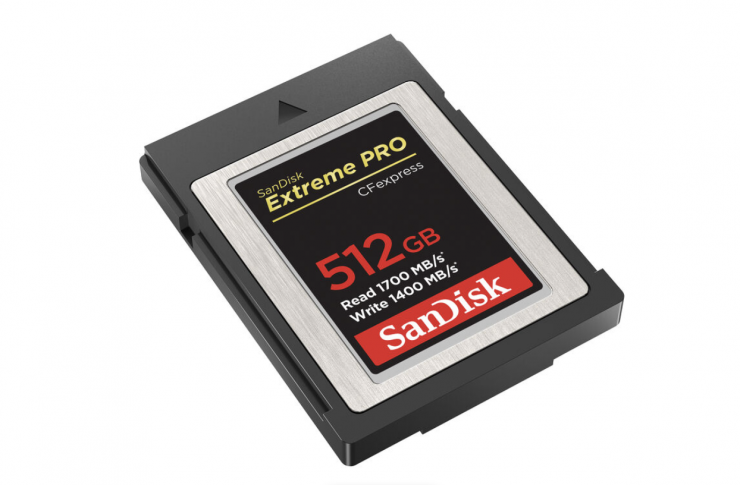
When I first got a C500 Mark II, a 512GB card was over AUD $1,000, thankfully they have come down in price, B&H currently has a 512GB CFExpress Type B card for $159.99 USD.
There is a lot to like about the C400, mostly the price point and features it offers. I wanted to buy a Sony Burano and sell my Venice but that makes little sense, selling a camera to pay more for a new one that does less.
I will be buying myself a Canon C400.





